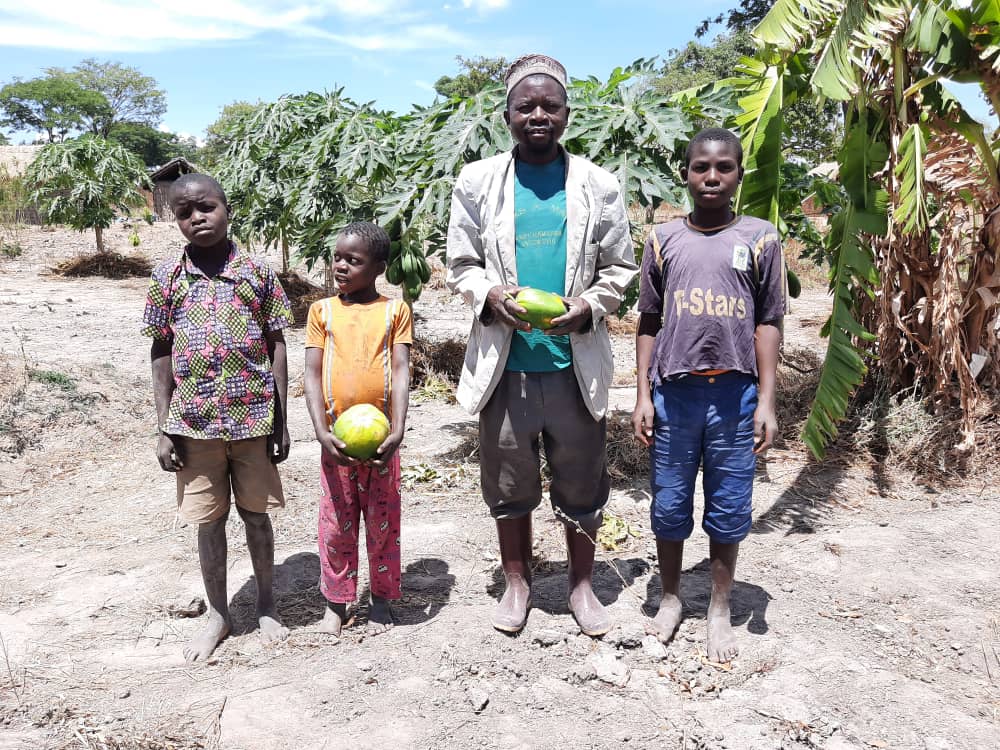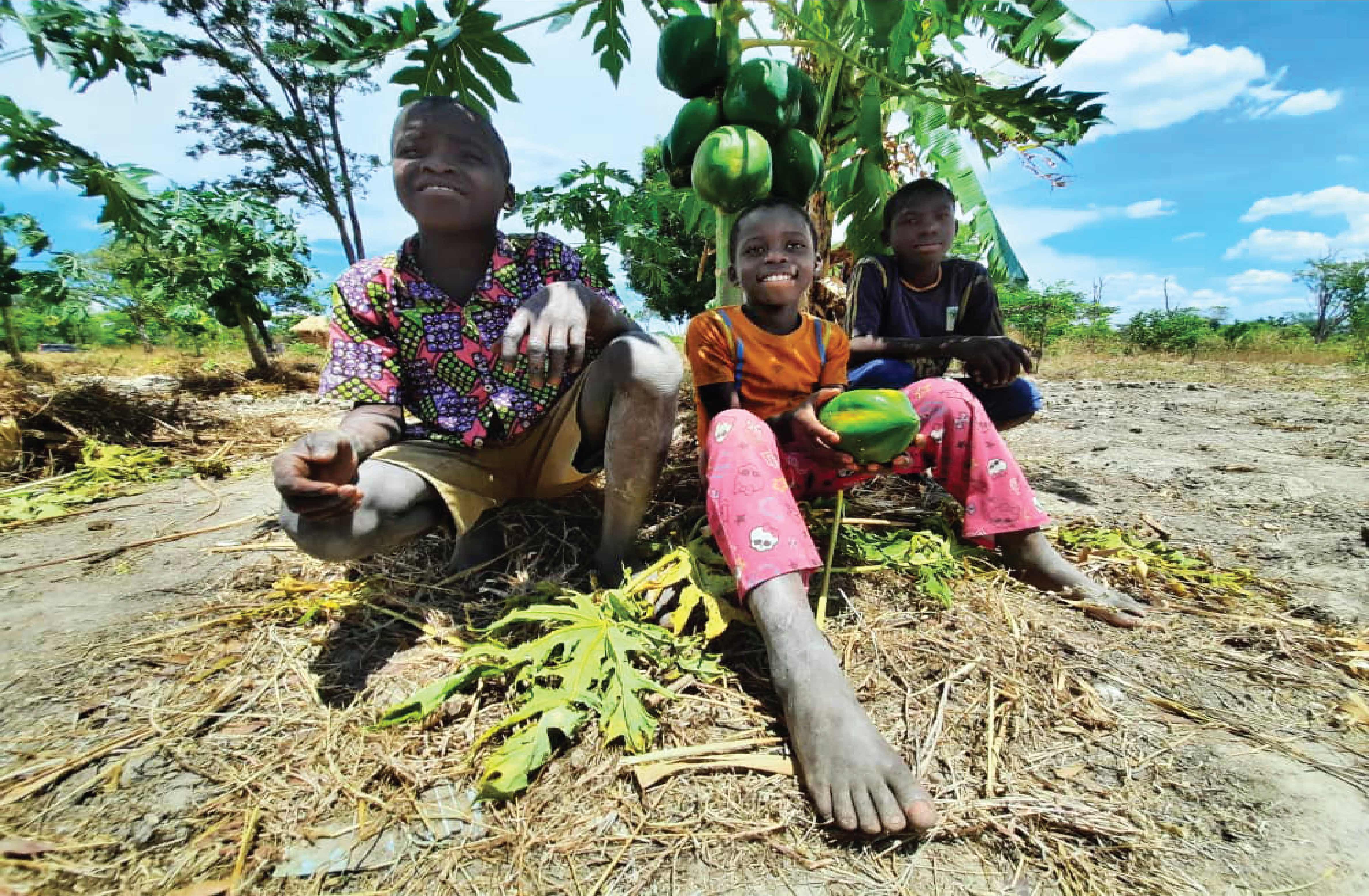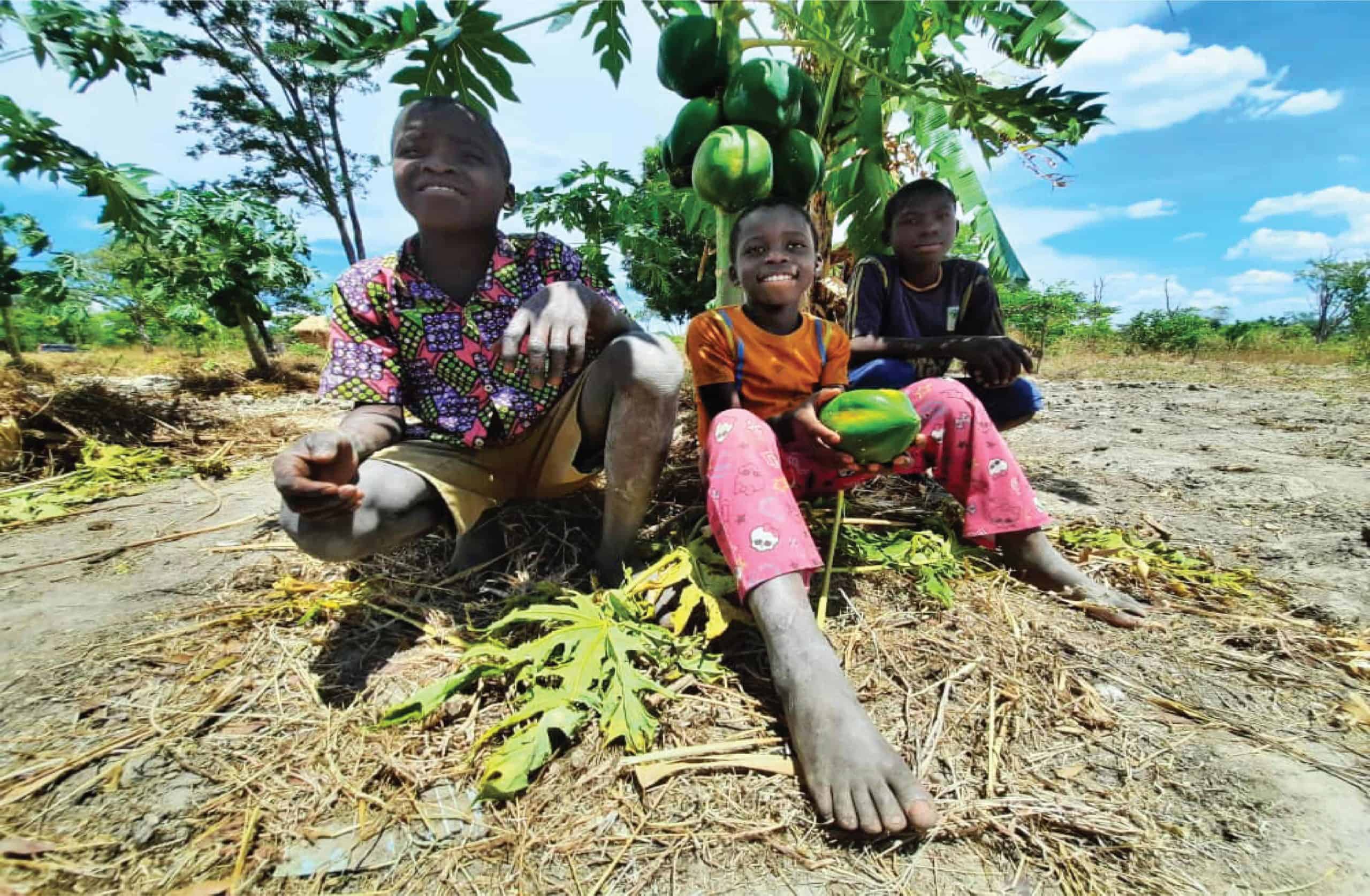“The Forest Garden Approach really has helped my family to smile again throughout the year and I consider it as the only chance to maintain my family happiness,” Hamis says. “Now I have something to eat and sell to support my family during the dry season.”

Trees For The Future’s Forest Garden Approach combines agroforestry, permaculture, and sustainable practices to improve land and livelihoods. TREES’ four-year Forest Garden program gives farmers like Hamis the in depth training they need to establish and maintain a thriving Forest Garden. Hamis joined the program in 2019.
“When I look two years back to compare the lives of my family before the TREES Forest Garden program, I see the biggest difference,” Hamis says. “Now my family is going out of hunger, poverty and I have improved my agricultural practices… [I have] a variety of fruit and timber trees which in return will improve the environment while improving my income too.”
In a traditional monoculture approach to farming, a farmer has just one harvest, just one pay day. TREES encourages farmers to diversify their crops so that they can increase their resilience to pests, economic crises, and weather events like droughts or floods. For farmers in regions that experience dry seasons, food is sparse and savings are little to none during that season. But with the Forest Garden Approach, farmers learn to plant a variety of crops that can grow and sustain them through the hardest parts of the year.
With thousands of trees in his Forest Garden, Hamis is now growing papaya, banana, lettuce, chinese cabbage, okra, pigeon peas, pumpkins, onions, and more.
“Through the Forest Garden Approach, I have been able to meet my family’s nutritional requirements through my Forest Garden with zero costs,” Hamis says. “Now my family can get a variety of fruits and vegetables [from] around the house. On top of that, I am earning some income by selling surplus products from my Forest Garden.”

As Hamis continues through the program he and his family will keep learning more about regenerative farming techniques and work with TREES staff to find additional income opportunities. When the program is over, Hamis and his kids will have the knowledge and training they need to continue benefiting from their Forest Garden for years to come.
Hamis’ success and the success of tens of thousands of Forest Garden farmers is made possible by donor support. Donate to Trees for the Future today to end hunger and poverty while improving the environment.
